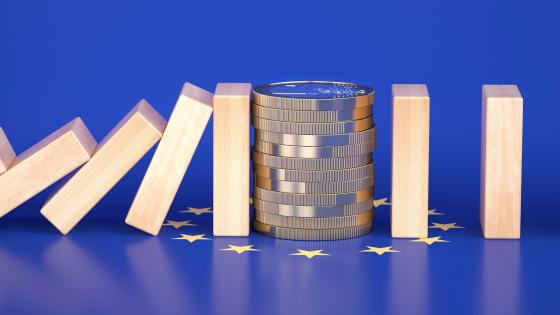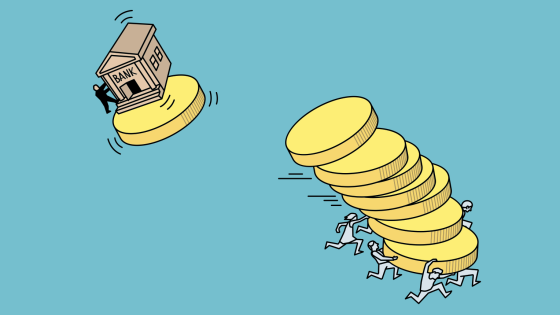Here we go again. Financial volatility is re-emerging, this time from the other side of the ocean. But in the current globalised environment the ocean isn’t wide enough to contain the contagion and fear.
- Will this rollercoaster ride end any time soon?
- Do policymakers (and Congress in particular) have the right diagnosis so we can hope that a cure is around the corner?
I fear the answer to both is no.
A global shortage of safe assets
While the focus of commentators and policymakers is on secondary (although still important) regulatory and corporate governance issues, the fundamental problem in the current global macroeconomic and financial equilibrium is one of asset shortages. In particular, there is a shortage of safe “AAA” assets. The world seems to need more US Treasury-like instruments than are available.
This shortage of safe assets existed before the crisis, but it is even worse today. The demand for these assets has expanded as a result of the fear triggered by the crisis – as it did for emerging markets after the 1997-1998 crisis. But this time the private sector industry created to supply these safe assets – the securitisation and complex-assets production industry – is severely damaged.
Much of what we see that confuses us today is the equilibrium consequence of living in an environment with this shortage. There is enormous asset price volatility, especially as assets transit out of the safe assets category. False emperors (AAA assets) are created, and it is only later on that we discover these emperors have no clothes. In fact, the recent difficulties in the Eurozone can be seen in this light, with Greece and others dropping from the potential safe-asset producers list. This shortage also leads to chronically low safe real interest rates, which fuels a wide range of incentive problems in the financial sector. These however, are the consequences, not the source. The US Congress and the Bank for International Settlements’ knee-jerk reactions are (mostly) bound to reallocate the malady, rather than cure it.
Instead, a more effective goal would be to focus on expanding the real supply of AAA assets. There are two basic ways of achieving this in the short run (in the long run it will come from financial development in emerging markets). The first is for governments in safe-asset-producing countries to produce a lot more of them. The second is to let the private sector create the AAA assets and for the governments (at a fair price) to absorb only that part of the risk the private sector cannot handle; this being the risk that arises during extreme systemic events, especially when compounded by panic.
Currently the focus (implicitly) is on the former strategy. Indeed, funding fiscal deficits is very inexpensive these days… as long as one remains within the safe-asset-producer category. However, were we to continue along this path, at some point it will make sense to decouple fiscal deficits from asset production – lest we find ourselves cast in an epic Greek tragedy. The US Treasury would have to start buying riskier private assets rather than running fiscal deficits as the counterpart for its supply of Treasuries to the market.
A sounder approach
However, the second, private-public approach is probably a sounder medium-term strategy than the purely public approach. There were many good aspects of the securitisation industry, e.g. the tranching of liabilities, etc. This industry showed capability to generate ample micro-AAA assets but, by construction, it has a much harder time generating macro-AAA assets (assets that can withstand a large systemic event). The reason is that lower-quality assets (the ingredients for the securitisation and CDO industry) cannot generate better quality ones from pooling in scenarios where everyone runs in the same direction.
We should separate the production of micro- and macro-AAA assets. The private sector is much more efficient than the government in producing micro-AAA assets, but the opposite is true for macro-AAA asset production. Issuing public debt leaves the government in charge of bundling and producing both the micro- and the macro-AAA assets. Instead, if the government only provides an explicit insurance against systemic events to the micro-AAA assets produced by the private sector, we could have a significant expansion in the supply of safe assets without the corresponding expansion of public debt. Of course there would a significant expansion of the notional liabilities of the government, but it is nearly certain that the ex-post cost would be much less than in any of the real alternatives.
Conclusion
It is time to start thinking about the signal rather than the noise. Failure to do so will mean we continue to be surprised by the random rise and fall of the new creations aimed at bridging the fundamental safe-assets gap, be it done by the private sector alone or by sovereigns. Unfortunately, the current financial reform efforts are mostly aimed at the symptoms rather than the underlying problem, and in many instances these efforts will exacerbate rather than reduce the shortage of safe assets problem. The best of intentions are surely behind the so-called Volcker-rule and significant rises in capital requirements, but by themselves they may increase rather than reduce systemic fragility once general equilibrium forces have a chance to react – and they always do.



